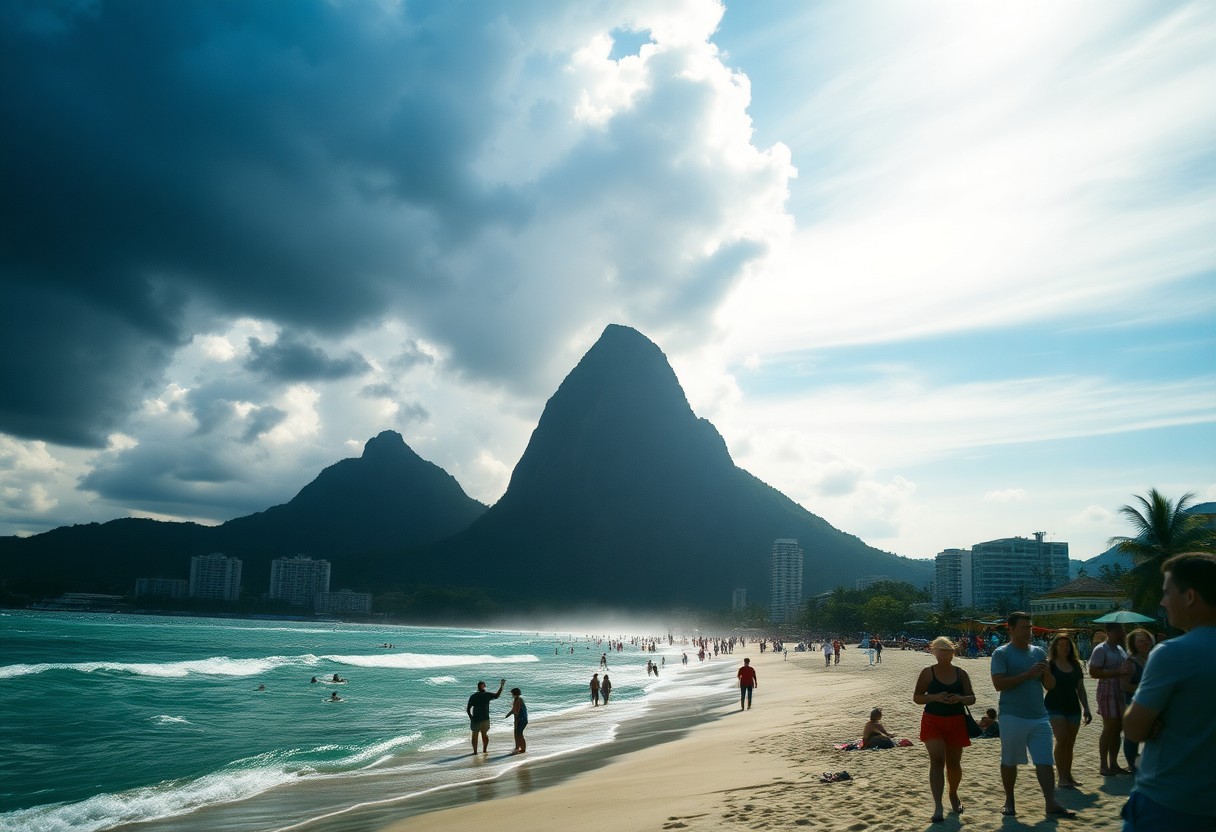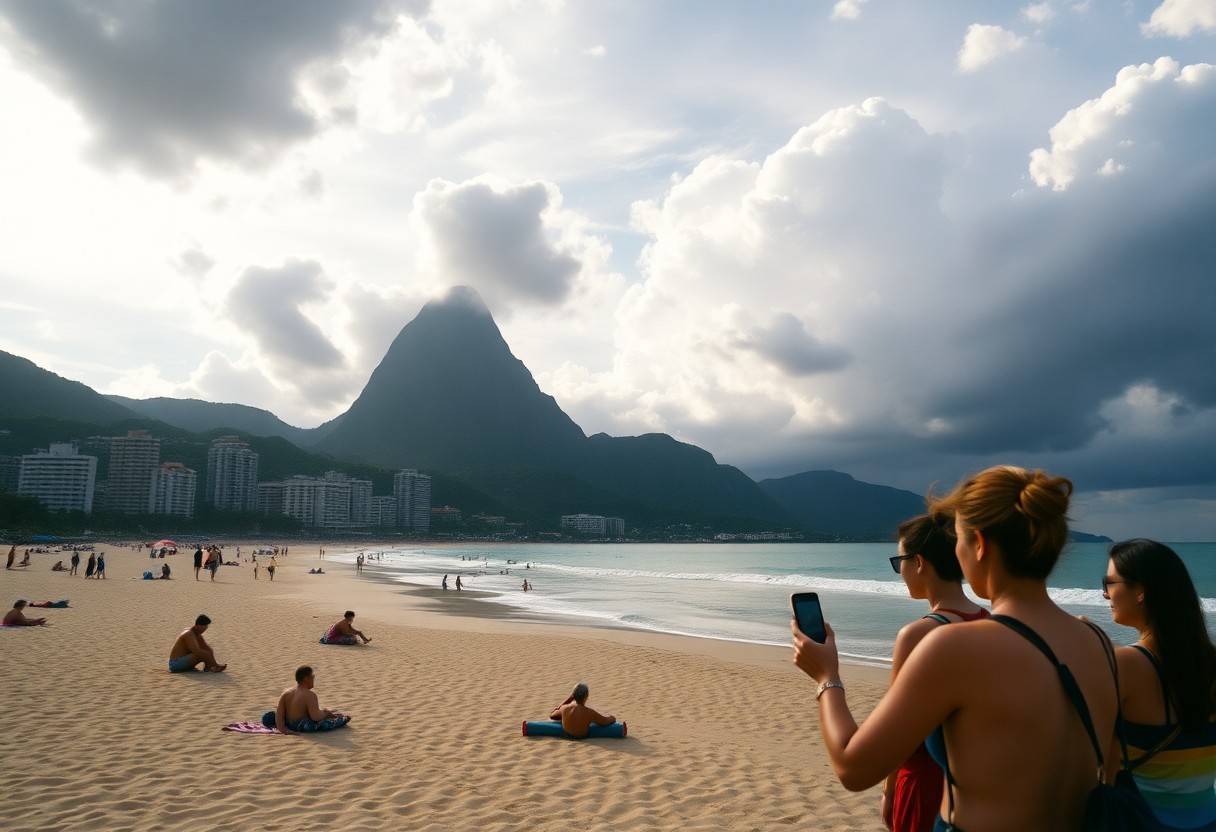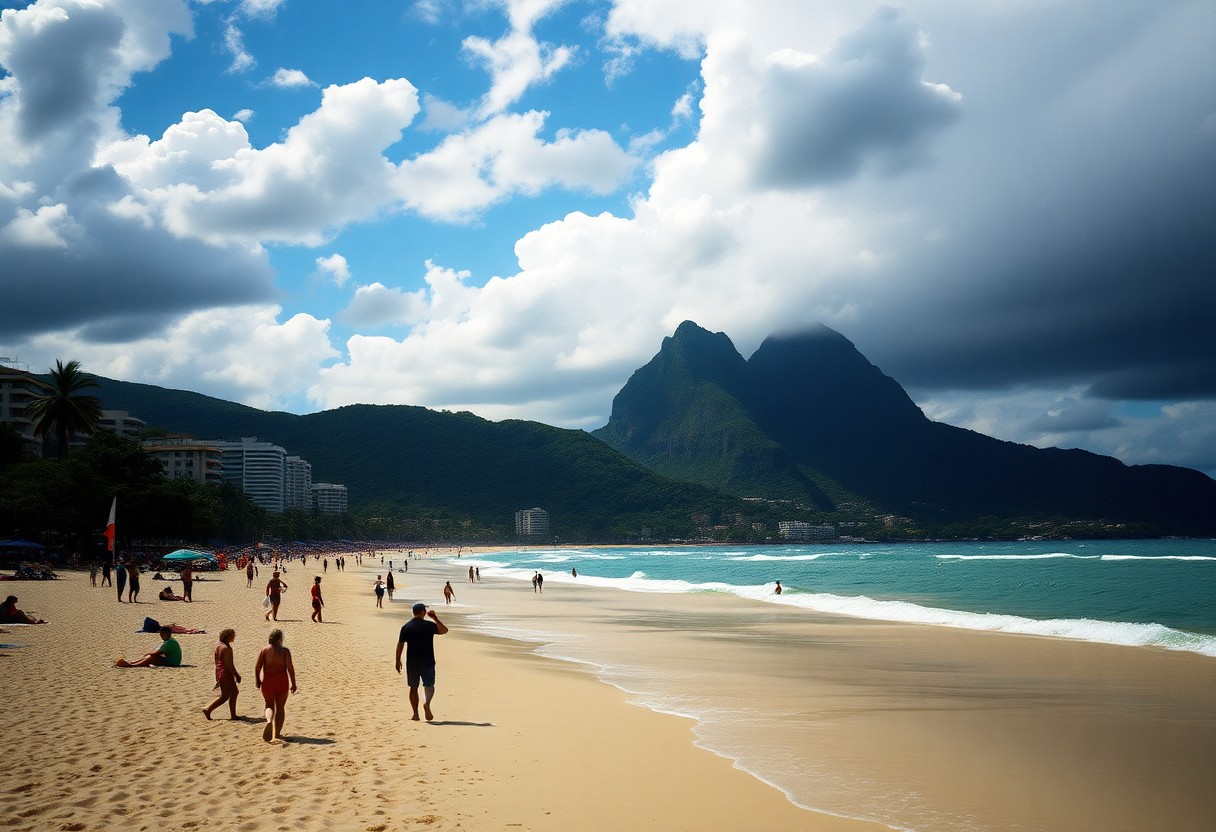As you plan your exciting journey to Rio de Janeiro, grasping the perfect times to visit can significantly enhance your overall experience. This vibrant city enjoys warm temperatures year-round, but each season presents unique features that could shape your travel choices. For instance, the summer months from December to March are alive with colorful Carnival celebrations, yet they also bring heavy rainfall and large crowds. Your ideal visit will hinge on your personal interests: if basking in the sun and enjoying beach activities is what you seek, consider traveling during the spring season from September to November, when you can enjoy mild temperatures and fewer tourists. Conversely, if you’re budget-conscious, the winter months from June to August may offer more economical options. By aligning your travel itinerary with the local climate and seasonal festivities, you can significantly enhance your enjoyment during your stay in Rio.
Explore the Distinct Weather Patterns of Rio de Janeiro for Optimal Travel
Before finalizing your travel plans to Rio de Janeiro, it's crucial to understand the city's tropical climate characteristics. With warm temperatures throughout the year, typically ranging from 68°F to 88°F (20°C to 31°C), Rio experiences two primary seasons: a warm and humid summer from December to March and a milder, drier winter from June to September. Each season brings its own set of benefits and challenges, making it essential to select the right time for your visit based on your planned activities and comfort preferences to ensure a fulfilling experience.
In-Depth Seasonal Temperature Analysis for Travelers
| Season | Temperature Range |
|---|---|
| Summer (Dec-Mar) | 77-88°F (25-31°C) |
| Winter (Jun-Sep) | 68-75°F (20-24°C) |
Throughout the year, visitors can expect comfortable temperatures in Rio, with summer months experiencing peak heat while winter provides milder conditions that are ideal for outdoor adventures. Understanding these temperature variations is vital for effectively planning your activities, ensuring you dress appropriately and engage in the best experiences the city has to offer.
Critical Rainfall and Humidity Insights for Travel Planning
When organizing your trip to Rio, it's essential to consider the city's rainfall patterns and humidity levels. Keep these vital factors in mind:
- Rainy season: December to March
- Average annual rainfall: 44 inches
- Peak humidity levels: 80% during summer months
- Driest months: June to August
The humidity in Rio can greatly impact your comfort while exploring this vibrant city. Consider the following points:
- Morning fog may affect visibility at famous tourist locations
- Refreshing coastal breezes can alleviate high humidity levels
- Evening humidity often rises near beach areas
- Air conditioning is widely available in most accommodations

Experience the Excitement of Rio's Peak Season (December-March)
If your travel itinerary coincides with Rio's peak season, prepare for intense heat and lively festivities. This period is marked by significant events, such as New Year’s Eve celebrations and the famous Carnival. It’s vital to secure your accommodations well in advance, as hotels fill up quickly during these bustling months. While you embrace the vibrant atmosphere, be ready to tackle the challenges that come with it, such as crowd management and planning your activities effectively.
Weather and Event Highlights During Rio's Peak Season
During the summer months, expect a mix of sunshine and rain, with temperatures occasionally soaring to 40°C (104°F). Frequent afternoon showers are common, particularly in December and January, resulting in higher humidity levels that can intensify the heat. This season is characterized by major festivals and lively events, creating an electric atmosphere throughout the city that’s truly unforgettable.
Weighing the Advantages and Disadvantages of Summer Travel
| Pros | Cons |
|---|---|
| Dynamic festival atmosphere | Overcrowded beaches |
| Ideal beach weather | Increased humidity levels |
| Exciting events and celebrations | Higher accommodation rates |
| Vibrant nightlife options | Longer wait times at attractions |
| Excellent swimming conditions | Afternoon rain showers |
Equipped with this knowledge, you can approach your peak season visit with enhanced clarity about what to expect. While the atmosphere is undeniably energetic and lively, managing crowds and costs is vital for a rewarding experience. Additionally, planning ahead is critical; aim to book your flights and accommodations at least 3-4 months in advance, especially if you plan to partake in the Carnival festivities. To optimize your time, consider starting your daily activities early to avoid the harshest sun and longest queues.
Make the Most of Your Visit During Shoulder Season (April-May)
The shoulder season offers a perfect balance between Rio's peak and low seasons. During these months, anticipate pleasant temperatures averaging 75°F (24°C), along with fewer tourists, creating an ideal environment for exploring the city’s many attractions. This period is especially appealing for those seeking a more laid-back experience without the overwhelming crowds typical of summer.
Climate Characteristics to Expect in the Shoulder Season
During the shoulder season, you will experience mild and comfortable weather in Rio de Janeiro. Compared to the hotter summer months, there are fewer rainy days, with only occasional light showers. The humidity levels significantly drop, making outdoor activities much more enjoyable. The ocean temperature remains inviting for swimming, hovering around 73°F (23°C), allowing you to relish beach activities with comfort.
Travel Advantages and Budget Considerations During the Shoulder Season
Travelers on a budget will find that April and May present excellent opportunities for savings. You’ll discover that hotel rates can be up to 30% lower than during the peak season, and shorter wait times at popular attractions like Christ the Redeemer and Sugarloaf Mountain enhance your overall experience. The shoulder season is the perfect time to enjoy the balance of favorable weather and accessibility to the city’s highlights.
The mild climate not only allows for enjoyable beach activities without large crowds but also creates a welcoming backdrop for exploring outdoor markets and taking advantage of discounted prices on tours and activities. The pleasant weather is perfect for hiking in Tijuca National Park or engaging in walking tours through Rio's historic neighborhoods.

Uncover the Unique Allure of Rio's Winter (June-September)
Rio’s winter months provide a refreshing change, featuring pleasant temperatures between 18-25°C (64-77°F). This season is marked by reduced rainfall and lower humidity, making it ideal for a variety of outdoor activities. While beach visits may be less frequent, you will encounter fewer tourists and more attractive hotel rates, allowing for a distinctive experience in the city.
Winter Temperature and Weather Overview
| Feature | Description |
|---|---|
| Average Temperature | 18-25°C (64-77°F) |
| Rainfall | Minimal |
| Humidity | Lower than summer |
| Sunshine Hours | 6-7 hours daily |
During winter, minimal rainfall occurs, allowing for clear views of iconic attractions like Christ the Redeemer and Sugarloaf Mountain. You can expect stable weather patterns with plenty of sunny days, making it an excellent time for sightseeing and outdoor exploration.
Engaging Activities and Advantages for Tourists in Winter
Winter offers some of the best opportunities for sightseeing in Rio. Enjoy shorter lines at major attractions and comfortable hiking experiences in Tijuca National Park, immersing yourself in the stunning natural beauty of the area. This season is also perfect for urban exploration and photography, as you can take advantage of lower accommodation costs while enjoying a more authentic local experience with fewer tourists around.
Your outdoor adventures will be less hindered by rain, allowing for a more leisurely exploration of the city. With fewer crowds, securing reservations at popular restaurants and booking tours becomes much easier. Overall, winter in Rio provides a unique mix of enjoyable weather and enriching experiences.
Celebrate the Splendor of Rio During Spring (October-November)
Springtime in Rio heralds a beautiful transformation, offering a blend of mild temperatures and decreased tourist crowds. Visiting during these months grants you an excellent opportunity to explore the city's attractions without the hustle and bustle of the summer rush. The beaches become increasingly inviting, with average temperatures around 77°F (25°C), and access to iconic landmarks becomes more manageable.
Spring Weather Conditions and Expectations
While spring welcomes pleasant temperatures, occasional rain showers are still possible. The humidity remains moderate, ensuring that outdoor activities are both comfortable and enjoyable. The weather creates an ideal setting for both beach enjoyment and city exploration, with clearer skies providing breathtaking views of Christ the Redeemer and beyond.
Travel Benefits and Cost Savings in Spring
This season offers significant advantages for budget-conscious travelers, with lower accommodation rates and flight prices. You can expect:
- Hotel prices dropping by 20-30%
- Substantial reductions in flight costs
- Shorter lines at major attractions
- Improved availability for restaurant bookings
After the winter months, tourism gradually begins to pick up, but prices remain competitive, making spring an ideal time for travel.
Your visit during this season offers flexible planning opportunities, thanks to these enticing benefits:
- Access to last-minute bookings without inflated prices
- Options for upgraded accommodations at standard rates
- Special deals on guided tours
- More personalized attention at restaurants and attractions
Upon reviewing all four seasons, spring emerges as a smart choice for travelers seeking value and memorable experiences.

Essential Travel Planning Tips for a Stellar Experience in Rio de Janeiro
Despite Rio de Janeiro's year-round charm, meticulous planning is key to ensuring a smooth and enjoyable trip. Always pack light and breathable clothing along with adequate sun protection regardless of the season. Additionally, ensure your travel insurance includes coverage for medical emergencies and theft. The safest areas for visitors typically include Copacabana, Ipanema, and Leblon, where you can explore with peace of mind. Combining guided tours with independent exploration offers the best way to fully experience the city.
Recommended Duration for an Unforgettable Stay in Rio
A stay of at least 5-7 days is ideal to explore the main attractions of Rio de Janeiro. This timeframe allows you to allocate two days to iconic sites like Christ the Redeemer and Sugarloaf Mountain, two days for relaxing on the beach, and one day for cultural experiences and local discoveries. The remaining time can be reserved for spontaneous adventures or day trips to nearby attractions, enriching your overall experience.
Budget-Friendly Strategies for Your Rio Adventure
Your average daily budget in Rio can range from $50-200, depending on your travel style and preferences. The most significant expenses typically involve accommodation and activities. If you visit during the low season (March-November), you can enjoy savings of up to 40% on hotels and flights, making it a fantastic time to visit.
To optimize your savings, consider these essential tips: book accommodations well in advance, utilize public transportation whenever possible, dine at local eateries rather than tourist-centric restaurants, and invest in a Rio Pass for discounted access to attractions. Look for package deals during the shoulder season, and consider staying in neighborhoods like Flamengo or Botafogo for more affordable rates.
- Always keep small bills on hand for local vendors
- Use reputable taxi apps for safe transportation
- Pre-book major attractions online to skip long lines
- Secure your valuables in your hotel safe
Insights for the Informed Traveler to Rio
Rio de Janeiro stands out as a destination offering year-round allure, with each season highlighting unique experiences. The city is most vibrant between December and March, when temperatures peak at 82°F (28°C) and iconic events like Carnival electrify the streets. While the summer months bring higher prices and larger crowds, they also afford an unmatched opportunity to immerse yourself in Rio's rich culture. If you prefer a quieter visit, consider planning your trip during April-May or October-November, when you can enjoy pleasant weather and lower rates. Always book accommodations early during peak season and stay aware of the potential for heavy rainfall and flooding risks during the summer months.
Frequently Asked Questions About Visiting Rio de Janeiro
Q: What are the best months for good weather and fewer crowds in Rio de Janeiro?
A: The months of April and May are the most favorable for visiting Rio. During this period, the weather remains warm at around 75°F (24°C), with reduced rainfall and fewer tourists. This allows for clear views of Christ the Redeemer and Sugarloaf Mountain, along with more competitive hotel rates. The beaches continue to be inviting for swimming, and you can explore the city's attractions without being overwhelmed by crowds.
Q: When should I avoid traveling to Rio de Janeiro?
A: The months from December to March pose challenges due to daily temperatures soaring to 95°F (35°C) and frequent heavy rains. These months attract the largest influx of tourists, leading to the highest prices, especially during Carnival in February. The combination of excessive heat, high humidity, and rain can detract from outdoor activities, with hotel rates often increasing by 50-200% during this peak season.
Q: What should I prepare for during Carnival season in Rio?
A: Carnival season, spanning February to March, brings soaring temperatures ranging from 85-95°F (29-35°C) and the likelihood of afternoon rain showers. It is advisable to book hotels at least six months in advance, as prices can triple during this busy period. The main parade lasts for five days, accompanied by lively street parties that commence early in the morning. Ensure you pack lightweight clothing, rain gear, and sun protection. Staying near Copacabana or Ipanema beaches will provide convenient access to events and transportation options.
The Article: Best and worst times to visit Rio de Janeiro weather events and travel tips appeared first on https://rentacar24.org/
The Article Best and Worst Times to Visit Rio de Janeiro: Travel Tips and Weather Was Found On https://limitsofstrategy.com



Comments are closed